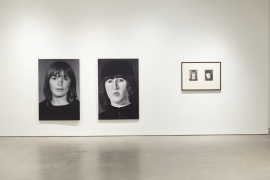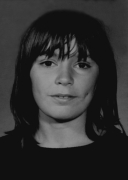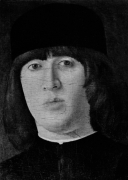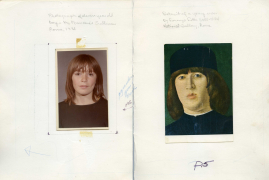Portraits de personnes qui se ressemblent, 1971
To the left: 2003 print, to the right: 1976 print. Exhibition view of Françoise Sullivan. The 1970s, 2021, Galerie de l’UQAM
Photo: Paul Litherland
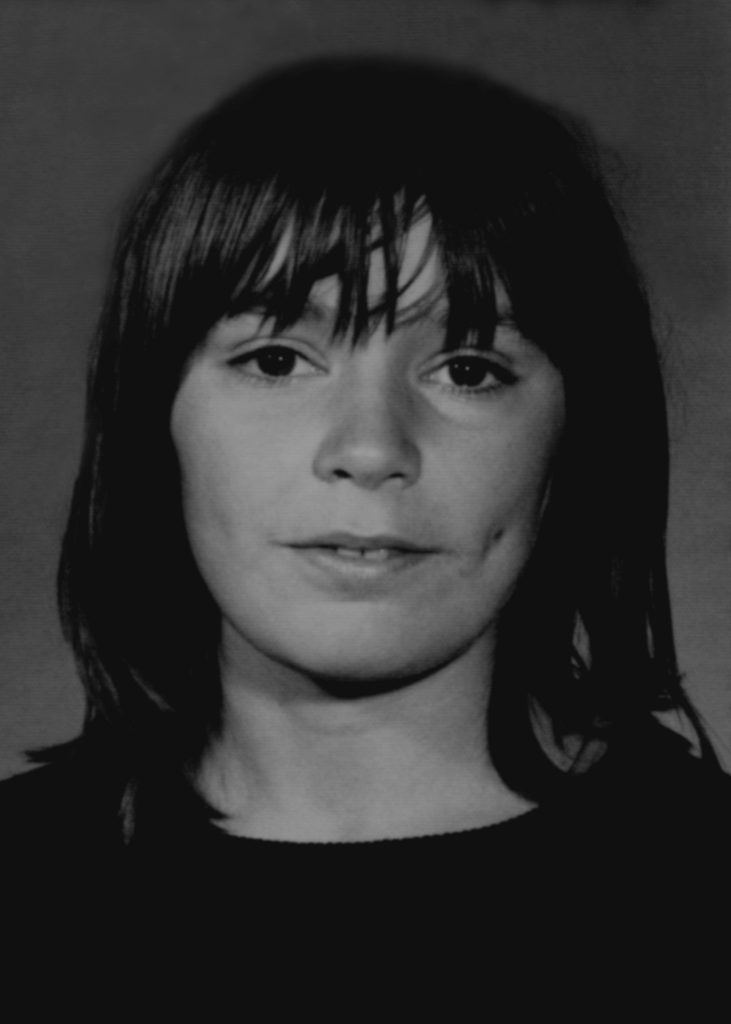
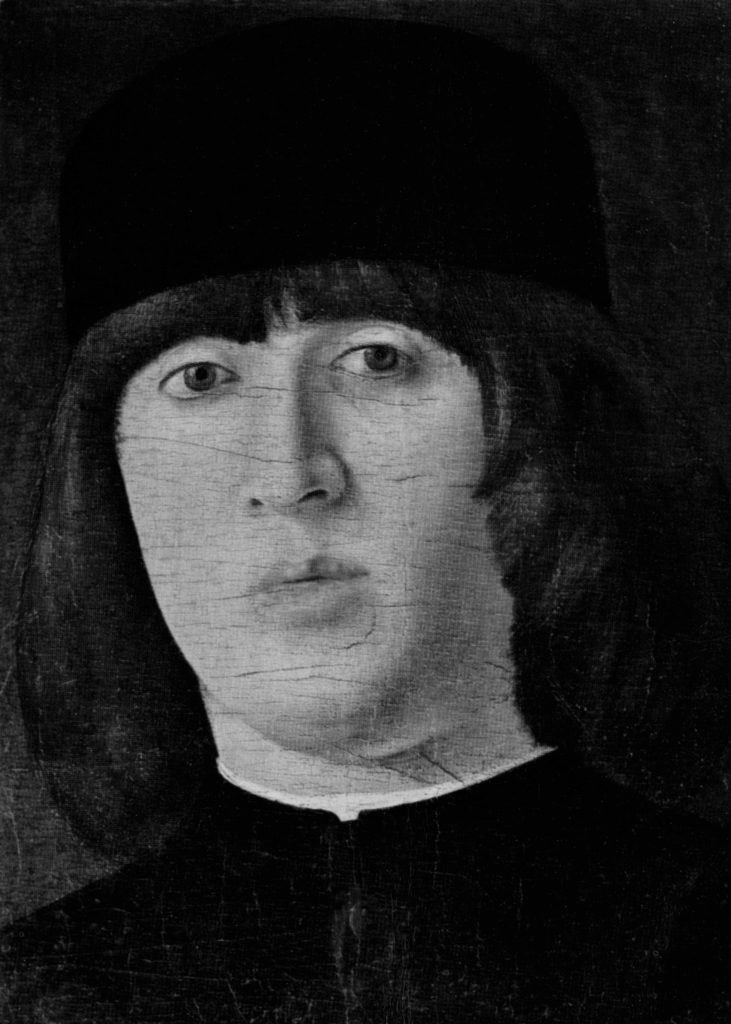
2 digital black and white prints produced in 2003 from the original model, mounted on wood panels
Collection of Musée national des beaux-arts du Québec
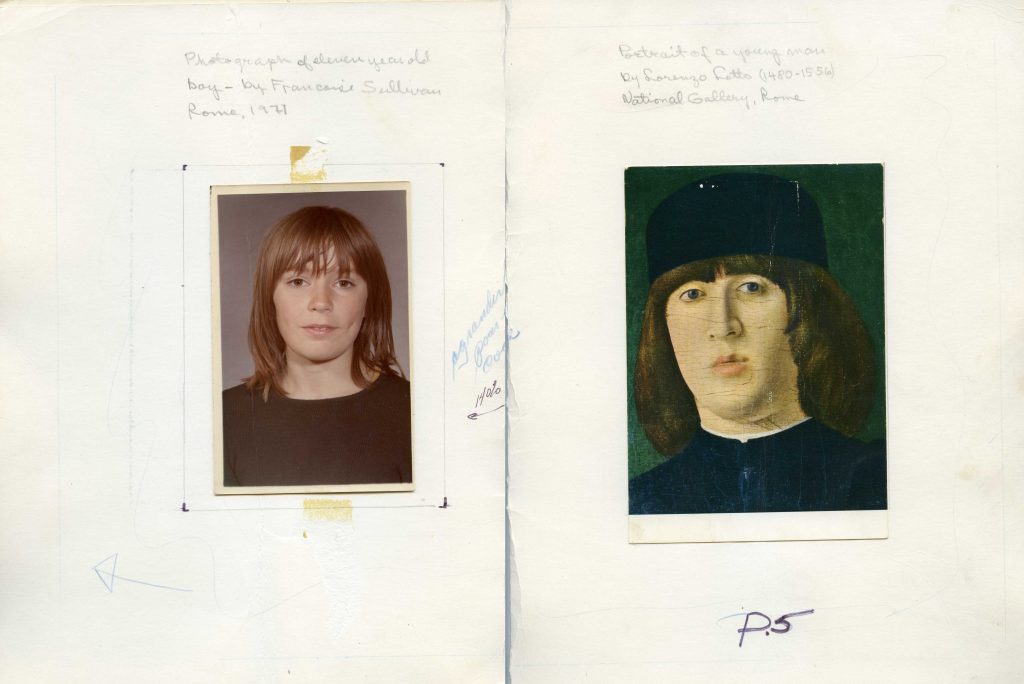
Model
Postcard, photograph, lead pencil, coloured pencil, ink and collage on paper
27.9 × 42.3 cm
Collection of the Musée national des beaux-arts du Québec
Portraits de personnes qui se ressemblent, 1971
2 digital black and white prints produced in 2003 from the original model, mounted on wood panels
152 × 101.1 cm and 151.8 × 101.4 cm
Collection of Musée national des beaux-arts du Québec
When Françoise Sullivan was living in Rome with her four sons (1971–1972), she liked to go to museums while they were in school. One day, at the Galleria Nazionale, she discovered Portrait of a Young Man by Lorenzo Lotto (1480–1556). She was overcome by a curiously intense feeling for this young face and was happy to find a postcard of the portrait so she could keep with her the image connected with her feeling. When her son Francis returned from school, he reminded her that the students had recently had their school pictures taken and showed her his. And this explained her feeling: at the same instant, but at the considerable distance separating the museum from the school, two faces converged in the artist’s consciousness. The significance of the images’ encounter lay in the concept that fortuitously associated them in her mind, that of resemblance. The original documents – the postcard and the photo portrait – were in colour. They form a complex conjuncture between art and life, painting and photography, the conceptual nature of art and its expressive potential.
